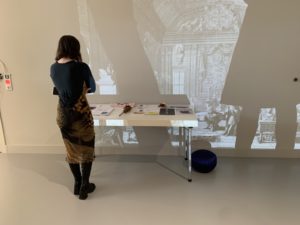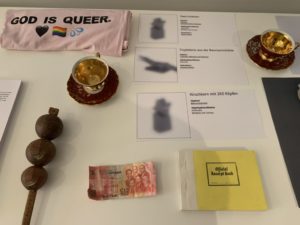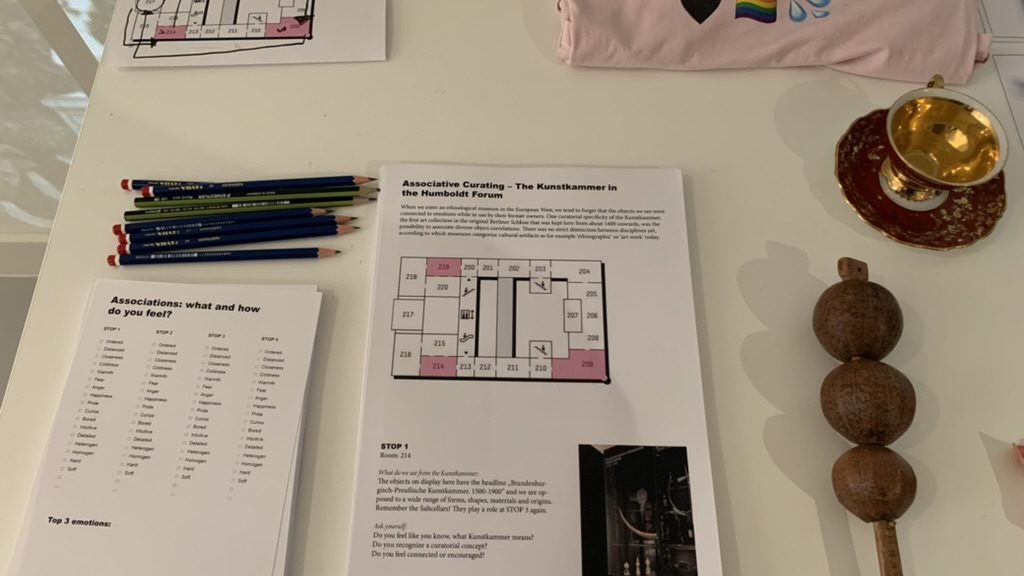
When we enter an ethnological museum in the European West, we tend to forget that the objects we see were connected to emotions while in use by their former owners. One curatorial specificity of the Kunstkammer, the first art collection in the original Berliner Schloss that was kept here from about 1600-1750, was the possibility to associate diverse object correlations. There was no strict distinction between disciplines yet, according to which museums categorize cultural artifacts as for example ‘ethnographic’ or ‘art work’ today.
Let’s dive into the past and use this opportunity to associate cultural artifacts with emotions. Let us bring the presence of the Kunstkammer (partially) in our mind. As an alternative narrative, I investigate how much Kunstkammer still appears in the display of the Ethnological collection in the Humboldt Forum today and to what extend the added value of this historical exhibition practice, which lies primarily in the associative reception of the objects, can create awareness for the diverse origins of the objects.
The Kunstkammer has its imperial origin back in the 16th century and used to be conceived as a Staatsschatz (National treasury). During the 17th century, this Staatsschatz became more and more curated according to certain educational aspects. In this course, it became more open to the public and ‘museumized’ in the late 18th century. This art collection forms the basis of large parts of the whole historical museum landscape in Berlin until this day.Today, the Kunstkammer objects that are integrated in the display of the Ethnological Museum alongside objects from other contexts. The display follows a curatorial narrative that mostly addresses the origin of the objects before their existence in Berlin (if known). However, another part of these object’s biographies is constituted by their time in the Kunstkammer where the objects were surrounded by a more diverse selection of object than is the case today, which led to interdisciplinary curatorial concepts.
We must not forget that we don’t see most of the objects that were an integral part of the Kunstkammer anymore and that meanings and associations shifts according to context. What feelings do we associate with what we actually see at the museum today? Conceptualized as a tour through the Ethnological Museum, the visitor is led to artifacts that were already part of the Kunstkammer. By linking various object biographies, I attempt to tie in with the curatorial intention of the original Kunstkammer, namely to establish interdisciplinary chains of association and to recognize emotional connections between the objects that are not visible anymore.

Format: Tour
Materials: Beamer-projection of historical photographs of the Kunstkammer, object photographs printed on paper, Tour Kunstkammer, Feedbackbogen Gefühle
About the contributor:Meral Karacaoglan studied art history in Berlin, Paris and Istanbul. Currently, she writes her master’s thesis under supervision of Prof. Dr. Horst Bredekamp about representational factors of being female in 19th century painting of the Alte Nationalgalerie Berlin and their effects on the collecting practices of the museum then and now. Being part of the research project Museum and Society – Mapping the Social, she put a focus on art history as cultural history as well as museum history during her studies. Meral will start a position as curatorial assistant of the UN-Secretariats’ in-house art collection in New York City in February 2024.
